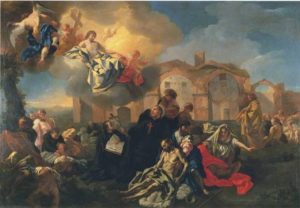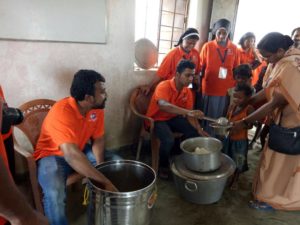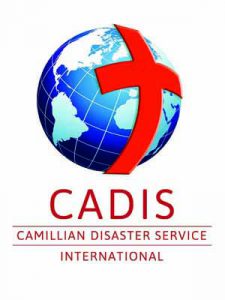Introduction
In this article I would like to manage to demonstrate how our presence through a multiplicity of forms and actions in response to natural and manmade disasters is a real expression of our charism and that in its implementation it allows the demands of totality of the fourth vow to be lived.
In the awareness that presence in the context of a disaster is a specific ministry, the CADIS Foundation, previously known as the Camillian Task Force, has evolved and developed its own pastoral practice. I will try to give an account of this through examples.
The Camillian Charism and Further Developments: CADIS
What allows us to define an experience as charismatic, the outcome that is to say of a charism, is the fact that it is rooted in history, takes a definite form, and is implemented through an ongoing group of persons who have adopted it; that it is a gift of Jesus Christ whose features it reflects with the broad kaleidoscope of his rich personality; that it is developed inside a changing historical context from which it draws challenges and stimuli in order to achieve renewed forms of ministry, remaining unaltered in its being but flexible in its work in response to the needs of the world; and that it takes place inside the Church, thereby contributing to the growth and the variety of the rich initiatives of the Church.
St. Camillus himself can be seen as the initiator of CADIS. The iconography of the sixteenth and seventeenth centuries allows us to argue in favour of the reasonableness of this statement. In the painting by Conca hung in the museum section of the House of St. Mary Magdalene we can see Camillus and his intention to come to the aid of the victims of the plague in Rome. Subleyras in his famous painting hung in the Museum of Rome, in contrary fashion, portrays Camillus engaged in saving the victims of one of the various floods of the Tiber, a cause of ruin and death for many people. The history of the foundation of the Order is marked by a specific recognition that plagues, floods and wars (the disasters of that epoch and not only of that epoch!) were an opportunity to live our charism with such a radical dedication that it was possible to put the fourth vow into practice. Some of the most dramatic, and at the same time most moving, pages of the history of the Order demonstrate the generosity shown by very many confreres who were able to give their lives in coming to the aid of the victims of disasters. In an interesting volume that discusses diakonia as the constitutive core of the Order, the author (Fr. E. Spogli, M.I.), after analysing the history of the Order of Camillians (a history that was not always edifying because of the inevitable human weaknesses), observes that disasters were able to reunite the Order and to renew in its individual religious awareness of our charism, stimulating them to engage in a competition of exemplary giving in order to make themselves ready to offer their service to the victims of disasters.
The charism as a gift to the Order comes from Christ whose merciful approach to the suffering it seeks to reproduce. Jesus reveals to every man a God who is a Father who is deeply inwardly merciful and suffers when His children suffer. Mercy is the real name of the Father, a characteristic that puts in a state of crisis theological visions that are structured around the performance of precepts and reward for those who are observant. God is the Father for all of His children and He awaits them with equal affection, without partiality or distinctions. This is 


The charism given to Camillus is thus an awareness that we have to be a balsam of mercy for all suffering. Camillus well knew the sad condition of the sick in the hospitals of his epoch; he had experienced that condition personally. What changed the status quo was a group of people who – moved by love for Christ and his model – took responsibility for relieving the great deal of suffering that was to be found in hospital wards. However, suffering is especially evident where pain is without meaning to the utmost, more than where it is unjust, a matter of discrimination, and in many cases diabolical. Wars and disasters are an example of this because those who suffer because of them are always the poorest and the weakest and the way they are is always the outcome of unjust conditions of life against which these people have no protection. For this reason, the balsam of mercy cannot be held back in those conditions that most denounce the absence of God and call for His presence. Aware of all of this, starting with Camillus and continuing nowadays, the presence of the Order where there is an outbreak of war, in situations of devastation caused by nature, in ethnic conflicts, and where there are epidemics of disease, has been seen as a very high way of living the charism of mercy towards those who suffer, following the model of Jesus himself, the first to run to offer succour, to pour balsamic oil and to weep with those who weep.



[1]Article 1 of our Constitution, adding to the previous article 1 which only referred to witness, observes that a specific feature of the charism is ‘the gift of reliving the ever-present merciful love of Christ for the sick and bearing witness to it to the world’.






